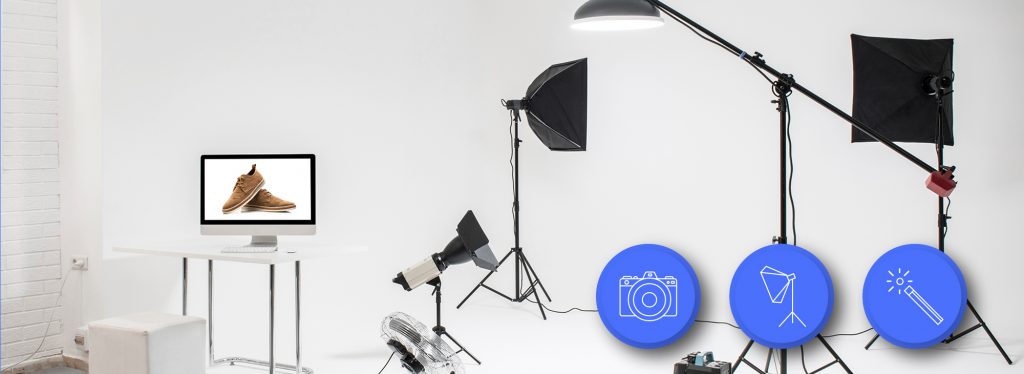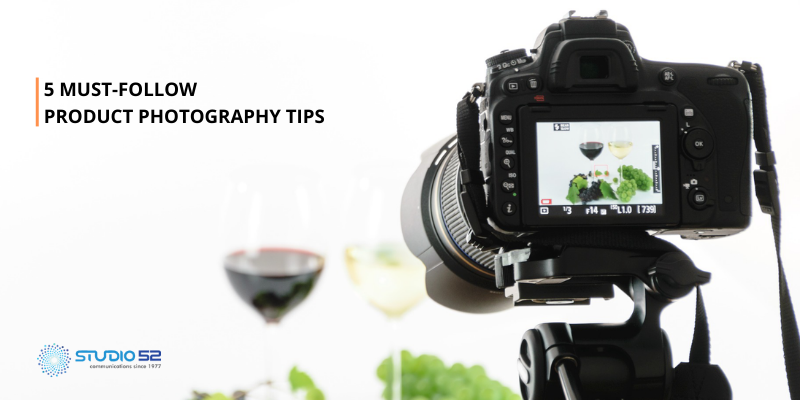There’s no doubt that images are the best way to showcase a product, but not just any image. When 93% of consumers consider images to be a major consideration while making a purchasing decision online, do you think a low-quality image would be able to hold their attention long enough? No, they are most likely to leave the website if they don’t like how it looks. The key to making the most of their first impression is to present professional product photographs that evoke maximum engagement. Do it right and those shoppers would be holding your product soon enough.
Photos are a key part of a consumer’s decision-making process, ultimately determining conversion and retention rates. So, let’s dive into some simple product photography tips that would help you sell your product.
1.1 What is Product Photography?
Before, we begin with the tips let’s understand product photography first. Professional product photography is the commercial form of still-life photography. Creating these high-quality product photos may sound simple but it’s no easy feat. For any business, product photography is crucial for showcasing the items you want to sell. It lets your customer see the merchandise in detail and if they like what they see, it entices them to buy. The product photographs are not just for product pages, but also for catalogs, billboards, brochures, company websites, social media posts, and marketing campaigns as well.
1.2 What are the Different Types of Product Photography?
There are two most common types of product photography:
Product-only Images – These photographs are usually taken against a clean, white background. A number of images are taken to showcase the product from different angles. Such product images are generally most suited for product pages, as they have a significantly higher rate of conversion.
In-context or Lifestyle Images – We use these images to show the product being used in its intended environment or alongside complementing products. It’s used to tell a story and is thus best suited for use of social media, emails, blog posts, and other marketing channels.
Whether you are shooting a lifestyle photo or a product-only photo, the rules are the same.
1.3 Why is Quality Photo So Important for a Product?
Product photography doesn’t just show your products, they boost conversions, keep the visitors longer on your pages and build trust and confidence in your brand. Here are some statistics that show how important professional product photos are to your online store:
- 83% of smartphone users in the U.S. say that product photography is “very” and “extremely” influential to their purchasing decisions.
- 93% of shoppers say visual appearance is a deciding factor in making a purchase
- 60% of US digital shoppers said they needed to see an average of three or four images when shopping online.
- 22% of returns happen because the product looks different in person than in the product photos.
- 29% also said a 360-degree photo best informs their choice, as the style encourages discovery.
Product Photography Tips
Now, let’s look at some of those photography tips you have been waiting for.

2.1 Use a Tripod for Photo Consistency
To ensure consistency across your products, you’ll need a tripod. There’s no harm in holding the camera yourself when shooting product photos. But as your business grows, and you take more photos of more products, it can be difficult to standardize the product’s orientation in each photo when shooting handheld. This is why we suggest using a tripod, it makes your photo look more consistent, but for this, it’s important that you don’t change the placement of the tripod during the course of the shoot.
There are many tripods in the market at varying price ranges for every camera, so you can easily get one for your camera. A tripod is totally worth the small investment and the extra time needed to set it up for a better-looking product photograph.
2.2 Get the Lighting Right
Good lighting is very important – there’s really no way around this one. It doesn’t matter whether you have a smartphone camera or a professional DSLR in your hand, if the lighting is bad, the picture will undoubtedly look bad. If you don’t have enough light the pictures would look grainy, however with good lighting pictures look more sharp and interesting. This is the kind of picture you would want to shoot to make more sales.
For good lighting, you don’t necessarily need all the expensive lighting that is available in the market, you can start with simple desk lamps or work lights. The key to good lighting is to use at least two lights from the left and right of your product. Stay away from lighting the product straight-on. Play with different angles to find out what looks more interesting. And, if your product has a shiny surface, make sure to shift the lights on your camera angle to avoid glare.
2.3 Shoot from Multiple Angles
A variety of images from different angles reassures potential customers that the product is good and worth investing in. People like checking out the product from every angle before they buy so there’s no reason your product photographs shouldn’t include that.
If you are photographing a small product that you can hold in your hands, we recommend you to shoot it from at least five major angles i.e. front, back, top, bottom, and side. Some products like a pack of wipes might not need to be shot from all angles. However, products that are expensive must include photographs from as many angles as possible.
Along with these also consider taking shots of any labels, or packaging that might influence your customers to buy. Also, include the photos of all the best features of the product, so the buyer gets a better idea of what it is you are selling.
2.4 Choose a Simple and Clean Background
To sell the product, you need a clean background so that all the focus is on the product. You can use a solid-colored wall as a backdrop too but it might not turn out to be that professional. A good way to keep your background clean is to use a sweep. A sweep lends your photograph a completely clean, solid background. It’s a very useful part of product photography as it eliminates the line between the table and wall and prevents you from accidentally capturing any blemishes in the background that go unnoticed by the naked eye. If you are wondering what a sweep is, it’s nothing but a large bendable paper that curves from underneath the product to act as the base and background of the photo.
That being said, sometimes you might notice that the product doesn’t pop out against a white background. At such times you can experiment against a dark background like black or dark grey. The color you use for your background evokes various emotions so think of the target audience and choose the color accordingly. Also, remember that picking the right background can make your product look classy and expensive while the wrong one can make it look cheap.
2.5 Take Multiple Shots
While selling your product online, visuals are your greatest asset as they help customers make quick buying decisions. And the best part is the medium allows you to include multiple shots of the image, so why not use it to your advantage. Take various shots of each product, highlight the key selling points, and put them in context to help buyers through their buying decisions.
For, example if you are shooting for a couch, there are various shots you can capture. It’s important that your prospective customers are able to envision themselves using your product. So, here you can include a photo of the product, the couch, in this case, being used in the home. Similarly, if you are selling a lounger nest for babies, you can shoot the images of the product as well as some images of it being in actual use.
2.6 Bonus Tip: 360 Degree Product Shots
If you are shooting for e-commerce websites, it’s a must for your product to have a 360-degree image as they are quickly becoming a popular choice. These 360-degree pictures have proven to increase customer engagement. The reason for this is it provides the exact type of product experience that customers have been looking for while browsing online.
Should You Invest in Professional Product Photography?
Now the million-dollar question is, should you do all this on your own or hire a professional product photography service provider to do the job. If you don’t have the budget, then you can definitely do it all by yourself with the help of the tips mentioned above. However, if you have the budget, we recommend getting in touch with a professional so your job gets done right! After all, the ultimate goal for every product is to sell and earn revenue, isn’t it? So, why not invest in it today for a better return? We know it for a fact that good photos bring sales. If you are looking for more information on product photography or looking for someone to partner with you for your product photography needs please get in touch with us.












